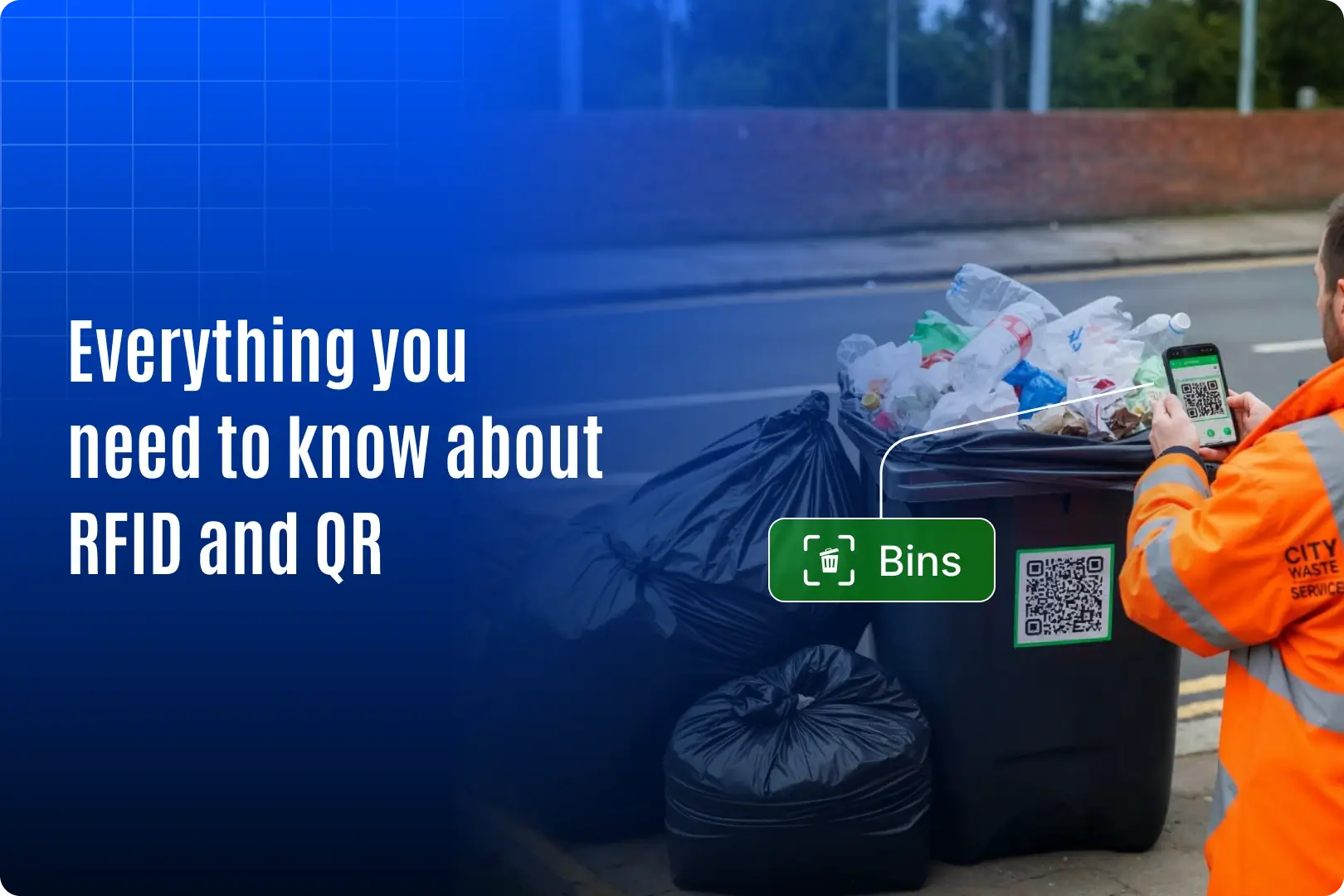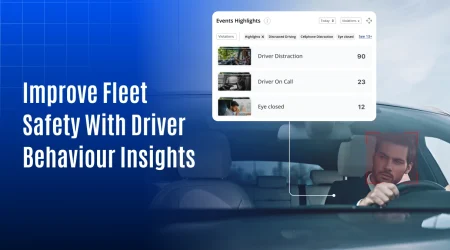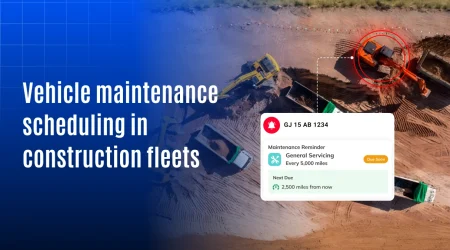Everything You Need to Know About RFID and QR

Ensuring proper waste disposal is one of today’s most urgent global priorities. Yet, keeping collection systems efficient and reliable continues to be a challenge for many cities.
In many operations, bins are still not digitally tagged or connected to tracking systems. That’s when the real problems begin. Missed pickups can’t be verified, records pile up on paper, supervisors are left in the dark, and citizen complaints often have no clear resolution. The result? Slower operations, weaker accountability, and growing frustration on all sides.
This is exactly why RFID and QR code integration is making such a difference in waste management. By giving bins a smart identity, every pickup is tracked, validated, and logged automatically. Managers get real-time visibility, crews stay accountable, and service delivery becomes easier to monitor and prove.
The outcome is simple: greater efficiency, stronger transparency, and a system that builds trust while preparing organizations for the future.
Understanding RFID and QR code integration
It’s a method to assign a unique, scannable ID to each waste bin. This can be done in two ways:
- RFID (Radio Frequency Identification): A chip embedded into or attached to the bin. Scannable wirelessly using a handheld or vehicle-mounted reader.
- QR code: A printed label on the bin, scannable via smartphone or a mobile app.
Once integrated with a smart waste software system each scan instantly logs:
- Bin ID
- GPS location
- Date and time
- Collector details
- Pickup status (collected, missed, not found)
- Optional photo, signature, or note
Common issues in traditional waste collection
Let’s consider how most collection systems fail:
- Bins get missed but are marked “done”
- Supervisors rely on phone calls or paper logs
- Complaints take days to verify
- There’s no data for SLA enforcement or billing accuracy
It creates bin-level traceability and builds a digital chain of custody – from task assignment to final pickup.
From bin to dashboard: how the system operates
Here’s how a typical day looks with this integration:
For the Collector:
- Opens route in the Collector App
- Scans each bin before pickup
- App auto-logs time, location, and bin status
- Adds a photo or reason if the bin is missing or inaccessible
- Works offline and syncs data later if needed
For the Manager:
- Monitors collection progress live on the dashboard
- Sees which bins are collected, missed, or skipped
- Gets automated alerts and completion reports
- Downloads bin-wise reports for invoicing, performance, and compliance
Business impact of RFID and QR code integration
Organizations that implement this see measurable results.
- Reduced missed pickups
Real-time scan validation ensures no bin is skipped without a reason. - Faster complaint resolution
Supervisors can pull up bin scan history and provide proof within minutes. - Improved crew accountability
Each collector’s activity is logged with time and location, reducing false claims. - Billing accuracy
Supports weight-based or pickup-based billing models with automated logs. - Higher citizen trust
Verified collections and faster responses lead to improved public satisfaction.
Real-World results of RFID and QR code integration
Before integration:
- 150+ missed bin complaints/month
- Route reports submitted manually
- 4–5 hours daily spent resolving issues
After integration:
- Missed complaints dropped by 75%
- Route data auto-synced in real-time
- Supervisor response time improved by 60%
Where RFID and QR Code integration creates the most value
If you’re a:
- Municipality struggling with service-level disputes
- Waste contractor managing large projects
- System integrator building smart city modules
- Facility manager for industrial parks or private zones
Factors to evaluate before adopting RFID and QR codes
Before adopting RFID and QR code technology, it is important to assess operational readiness and key requirements. Several critical factors influence successful implementation:
- Scale of operations – Number of bins, vehicles, and zones to be managed.
- Choice of technology – Cost-effective QR codes, durable RFID tags, or a hybrid model.
- Integration needs – Compatibility with existing waste management or fleet platforms.
- Workforce readiness – Training requirements for collection crews and supervisors.
- Connectivity & infrastructure – Internet availability or the need for offline-first functionality.
- Budget considerations – Balancing upfront hardware costs with long-term efficiency gains.
- Reporting requirements – Compliance, audits, and SLA-driven monitoring.
By evaluating these factors in advance, organizations can ensure smoother adoption, minimize risks, and maximize the long-term return on investment.
Final takeaway
In waste collection operations, verification and real-time visibility are becoming critical success factors. Traditional processes that rely on manual reporting or unverified task completion no longer meet the demands of modern service delivery.
RFID and QR code integration establishes a structured system of traceability—linking each bin, route, and collection event to a verifiable digital record. It creates operational transparency across teams, reduces service inconsistencies, and ensures data-backed execution from the field to the dashboard.
By eliminating uncertainty and manual oversight, this integration enables a scalable, audit-ready, and performance-driven waste management model. It serves as a foundational layer for organizations aiming to improve compliance, maintain service-level integrity, and operate with measurable accountability.



